MAY 2021 Blues Vol 37 No. 5 - Austin Cover
- Text
- Rear
- April
- Tactics
- Departments
- Technique
- Tactical
- Techniques
- Choke
- Enforcement
- Blues
joe vargas By Joe Vargas
joe vargas By Joe Vargas Over the past few years, critics have pointed to the need for more police training as a solution to the shortcomings of law enforcement. I would agree training is a necessity and should be an ongoing priority at every police agency, but getting it done is not simple. Questions on what training should be implemented and in what priority have been discussed both internally within law enforcement departments and with the communities they serve. Frankly, the task can be daunting. Department priorities and community expectations have to be taken into consideration. Curriculum has to be developed and trainers have to be trained. Then, there are the costs associated with training. What people don’t take into consideration is that every time a police officer is in training, someone must take their place, or their job isn’t getting done. For even the smallest departments, that can require up to thousands of hours a year. I’ve compiled a partial list of what can be considered training priorities by police departments and the community, along with the number of hours that might be required. As you can see, law enforcement leaders must take many things into consideration when planning these much-needed trainings. This is not GUEST EDITORIAL No Simple Answers for Police Leaders Tasked with Training Law Enforcement. Training is a necessity and should be an ongoing priority at every police agency, but getting it done is not as simple as it may seem. a simple or easy task to accomplish. DE-ESCALATION TRAINING Officers confronted with violent and non-compliant subjects have been criticized in their response when things go terribly wrong, especially when deadly force is used. The goal of de-escalation training is to provide officers with the skills to slow down, create space, and rely on communication to defuse volatile encounters. Let’s say that 24 hours of training would suffice for every officer in a police department. CRISIS INTERVENTION AND RE- SPONSE While not quite the same as de-escalation, crisis intervention training works to reduce injury or death during police interactions with people suffering from mental illness or who are experiencing a mental health crisis. This seems like a worthy effort and is critically needed at a time when these encounters seem to occur with some frequency. That would be another 24 to 40 hours of training. POLICE RESPONSE TO HOME- LESSNESS Not a single city in the country isn’t dealing with issues related to homelessness and homeless behavior. Police departments have assumed the role of the lead government agency on these issues. Homelessness impacts the community’s sense of well-being, safety and security. In this situation, police are often caught in the middle. Law enforcement is criticized if they step back and allow social service and non-profits to deal with the problem. If they take enforcement measures to set boundaries and they are taken to task for being insensitive and coming on too strong. If we ignore the violence and drug-related issues the problems can quickly go out of control. At least 24 hours of training would be helpful in providing tools for the officer’s toolbox. Coordinated homeless outreach: Where does law enforcement fit in? Collaborative responses are the most successful at efficiently using resources and driving down the homeless population when properly implemented. RACIAL SENSITIVITY, BIAS AND CULTURAL COMPETENCY Police officers throughout the country have been criticized for a lack of understanding of how racial bias can affect how they enforce the law and respond to calls for service. Implicit bias training is an effort to help officers understand how stereotypes and cultural biases can and do impact how we respond to people. Recent historical precedent shows how police departments were used to enforce racist and unfair laws, so naturally, there is distrust and suspicion. There is a real debate on the effectiveness of the training and if it leads to fairer policing. Training is, however, better than doing nothing. Most of the classes being offered are 8 hours in length and usually involve all department employees. PROCEDURAL JUSTICE Procedural justice speaks to the idea of fairness and transparency, such as how police departments interact with their communities and how they implement everything from enforcement strategies to personal contacts with the public. A great deal of this training is directed at police leadership, middle managers and supervisors. In reality, all offices could benefit from this kind of training. The training is usually one or two days. MOBILE FIELD FORCE 2020 was a year of demonstrations, protests and riots across the country. The critiques of police responses to these events are universal regarding the lack of training and preparation. These rebukes are not just for the officers on the line but in the command, as well as control of the situations by police commanders. Granted, this is not something police departments do every day but is something they have to be prepared to handle. Training of 24 hours for officers and 40 hours for police commanders could go a long way toward improving the police response. DUTY TO INTERVENE Something that has come up rather recently has been the failure of backup officers to intervene when they see another officer taking actions that are escalating a situation or are illegal. What can and should an officer do when they see something like this occurring? It’s been a standard oral board question for new hires for years. New hires are asked, “What do you do when you are working with an officer who is breaking the law?” There is a move to make “duty to intervene” a legal requirement for officers. Most departments already have this as a matter of policy. If this becomes the law, departments need to better train officers in how to handle these situations. That would be another 4- to 8-hour block. RESPONSE TO HUMAN TRAF- FICKING The public response to the crisis of human trafficking has been huge. Across the country, many jurisdictions have created task forces and collaboratives to deal with the issue. Young women and men being coerced into sex trafficking is happening in just about every city in America. In order to respond effectively, police officers need the training to identify the signs and respond in a manner that understands the suspects in these cases are, in fact, victims. About 8 hours of training would be helpful for every officer in the country. ACTIVE SHOOTER TRAINING Recent events continue to show the need for first responders to be trained in how to respond to events where an individual is actively engaged in killing or attempting to kill people in confined and populated areas. This can happen in a school, shopping center, or any area where the public gathers. While rare, the need for officers to be prepared for these dangerous and horrific calls is the reality of our times. Ideally, 8 hours every year might adequately prepare an officer in the field to respond. Triple that for an officer assigned to a SWAT unit. WAIT, THERE’S MORE As you can see, a lot of training needs to be done, in addition to the significant amount of ongoing training that still has to occur on a regular basis. Arrest and control techniques, police firearms and range training and emergency vehicle driving are all skills that have to be continually refreshed. It comes as no surprise these are some of the areas where police departments have the most civil exposure. Add to that regular legal updates, since the laws are constantly changing due to case decisions and legislative action. Add specialty investigative training for detectives and the hours continue to add up. Regular training is also needed on personal well-being, fitness and stress management. Police physical and mental issues are a real problem and are worthy of a department’s attention. HOW TO PRIORITIZE POLICE TRAINING Let’s say you are the police chief of your city. How do you prioritize the training on this list? Add in the complicating factor that due to the COVID-19 pandemic, your department budget has been reduced and there may be also public outcry to defund the police. Let’s not forget you have to make sure officers are still responding to calls and investigating cases. What is most important to get done first and how long is the training going to take? Is it going to be months, weeks, or years? It can be a daunting and challenging task. Training is needed, is necessary and is beneficial for any law enforcement agency. The decisions on how it gets done and how soon are not easy to solve. Public expectations need to be realistic: all this training isn’t going to happen overnight. About the Author Joe is a retired Anaheim Police Department Captain, a columnist at BehindTheBadgeOC.com and a POST-certified public and crisis communications instructor. He can be reached at JVargas@behindthebadgeoc.com. 10 The BLUES POLICE MAGAZINE The BLUES POLICE MAGAZINE 11
- Page 1 and 2: The BLUES POLICE MAGAZINE 1
- Page 4: The Real Heroes of 2021 It’s a hu
- Page 8: A Letter to the American Public: Wh
- Page 14: his life knowing he had to take the
- Page 18: Biden Nominates Sheriff Gonzales to
- Page 22: 16-year-old may face second degree
- Page 26: DC Police Hit by Russian Ransomware
- Page 30: In Person Events Vary Across the Co
- Page 34: Texas Memorial Service 2021 - Austi
- Page 38: Texas Memorial Service 2021 - Austi
- Page 42: Concerns of Police Survivors Hundre
- Page 46: A Group of Truly Inspiring Women pe
- Page 50: Harris County Memorial Service 2021
- Page 54: Houston Police Memorial Service 202
- Page 58: “White Cop Shoots Black Teenager
- Page 62:
“You have the right to remain sil
- Page 66:
THE OPEN ROAD by Michael Barron Wel
- Page 70:
asics as well as how to “safely
- Page 74:
FIVE THINGS THAT CAN GET YOU KILLED
- Page 78:
SAFE SEARCHING: THE STANDING BASIC
- Page 82:
HOW TO WATCH THE HANDS WATCH HANDS
- Page 86:
SURVIVING FOOT PATROL Walking a bea
- Page 90:
GUN GRABS GUN GRABS time that you w
- Page 94:
TAKEDOWN TECHNIQUES CHOKE ESCAPES 5
- Page 98:
LAST-DITCH IMPACT WEAPON TRAINING M
- Page 102:
INTO THE HEARTS OF DARKNESS INTO TH
- Page 106:
INTO THE HEARTS OF DARKNESS James S
- Page 110:
THE POWER OF THE PEN with defense a
- Page 114:
Were the Riots & Protests Really Ne
- Page 118:
Remember back in the day, when the
- Page 122:
Active Shootings & Officer Mental H
- Page 126:
unning 4 heroes Zechariah Cartledge
- Page 130:
and a large group of police officer
- Page 134:
Lieutenant James Kouski Hometown Po
- Page 138:
Police Officer Anastasio Tsakos New
- Page 142:
Take a Kid Fishing this Summer Ever
- Page 146:
MARKET PLACE - DISCOUNTS FOR FIRST
- Page 150:
150 The BLUES POLICE MAGAZINE The B
- Page 154:
EMPLOYMENT BENEFITS • Paid Vacati
- Page 158:
Montgomery County Pct. 4 Constable'
- Page 162:
CEDAR HILL ISD POLICE DEPARTMENT CO
- Page 166:
Come join the MISD Police Departmen
- Page 170:
STINNETT POLICE DEPARTMENT NOW HIRI
Inappropriate
Loading...
Mail this publication
Loading...
Embed
Loading...




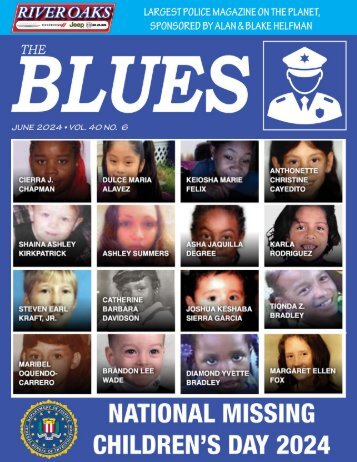
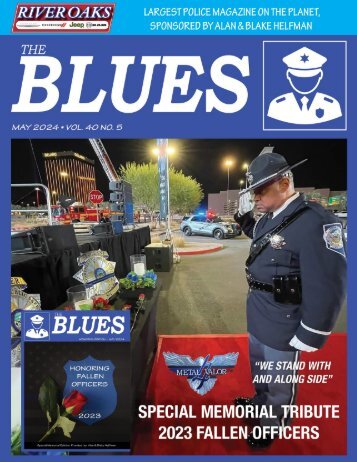
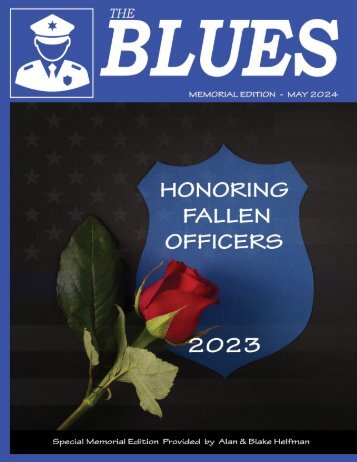



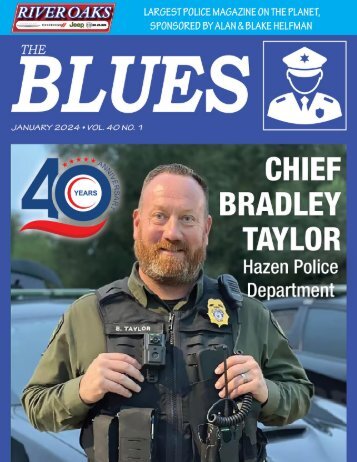
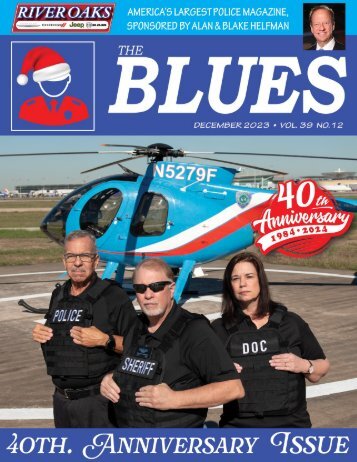
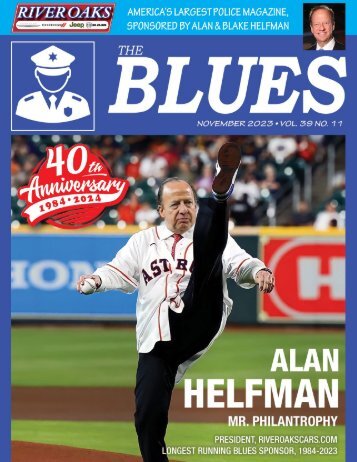


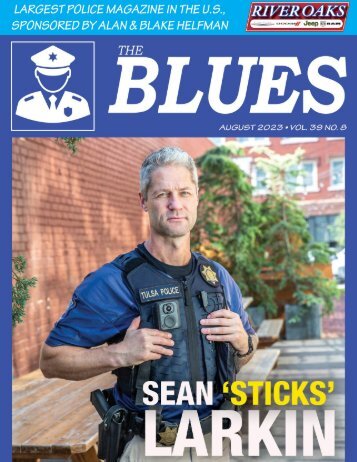
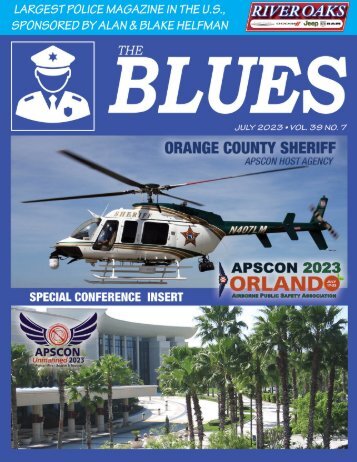
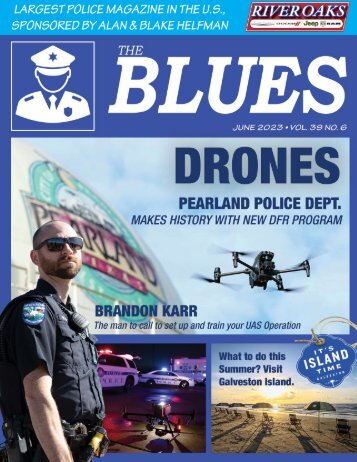
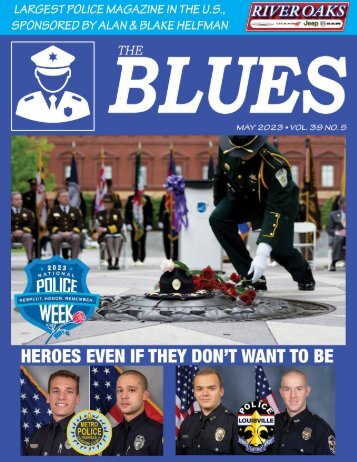
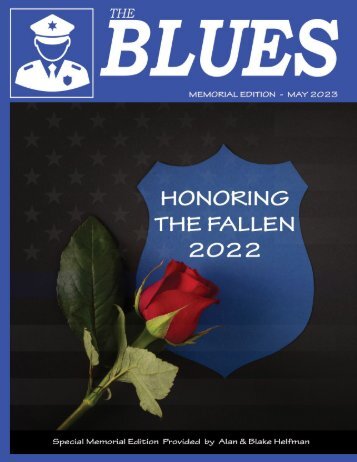
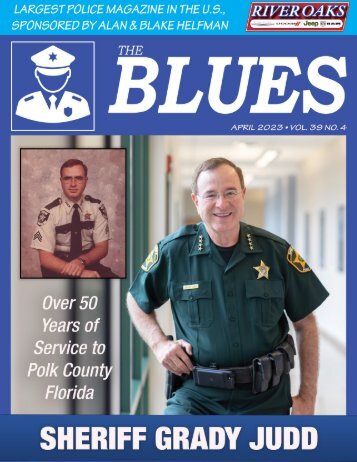

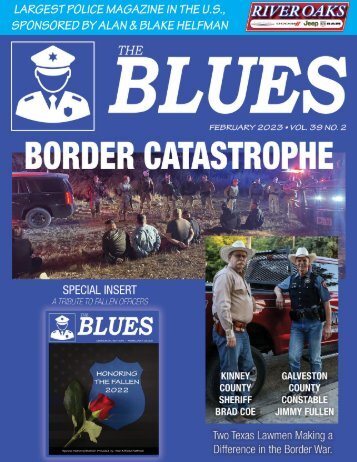
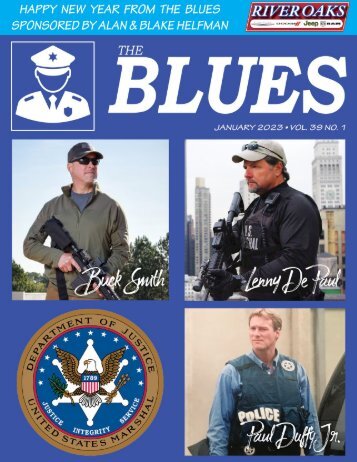



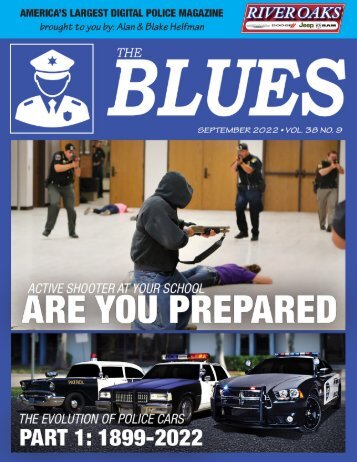


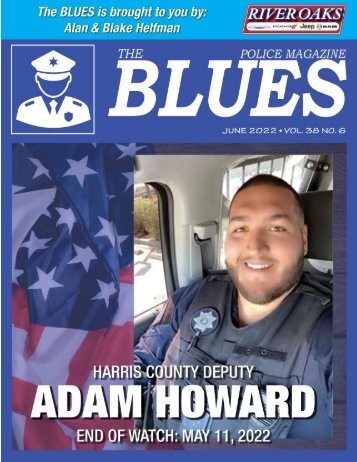

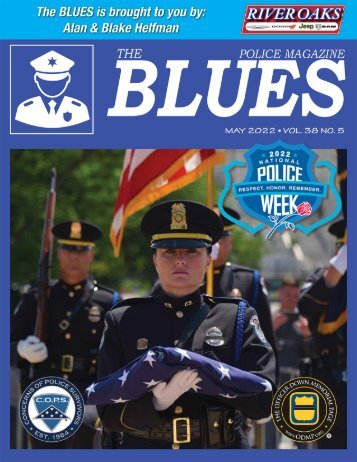
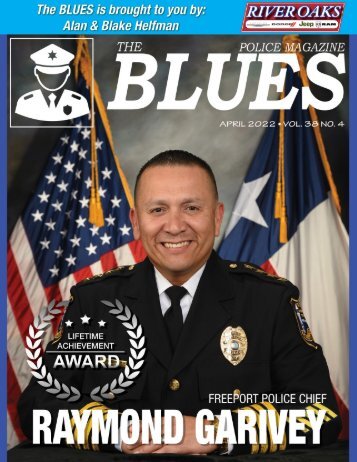
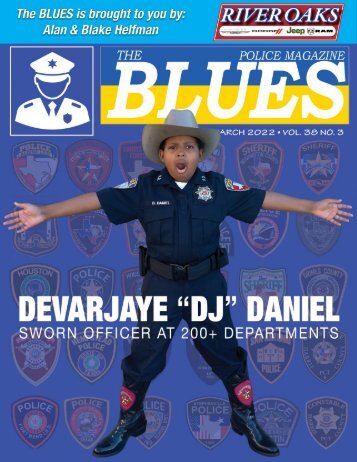
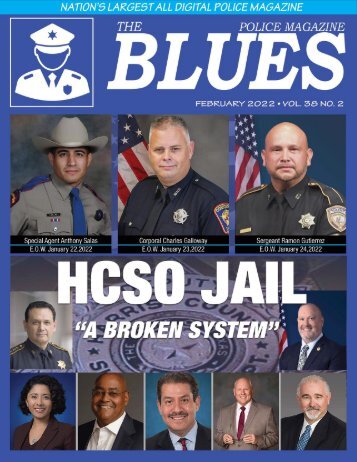
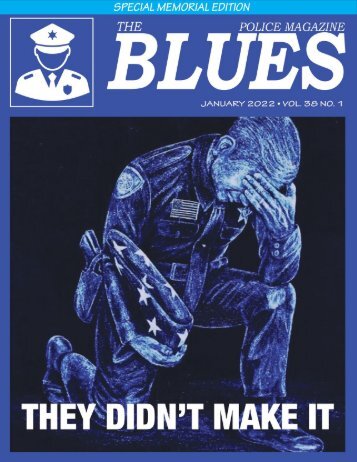


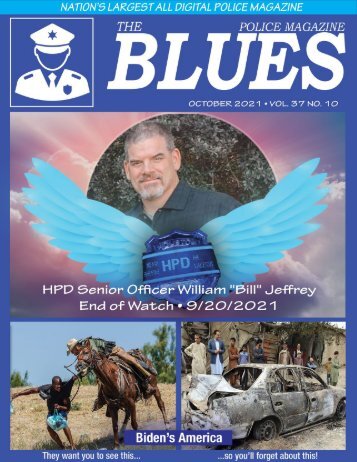
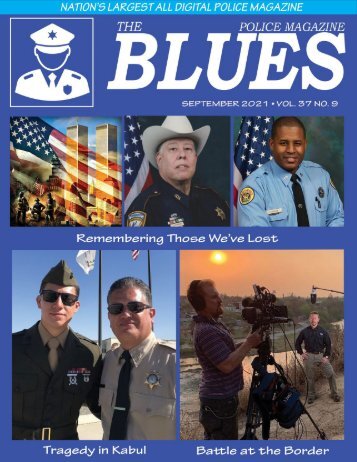



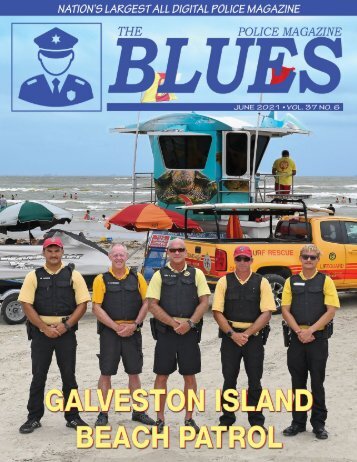

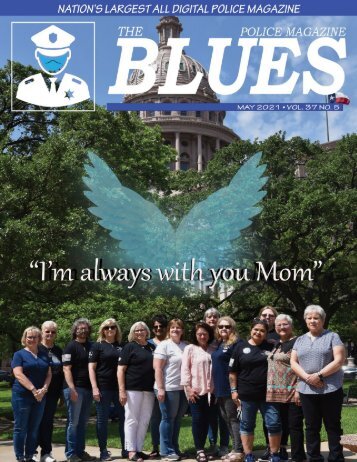


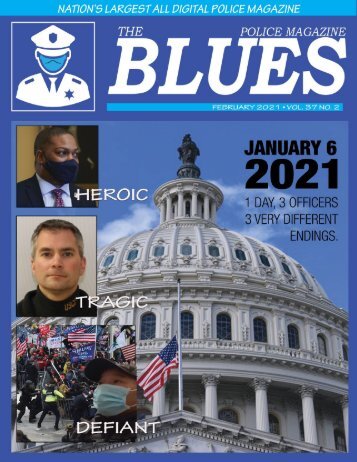


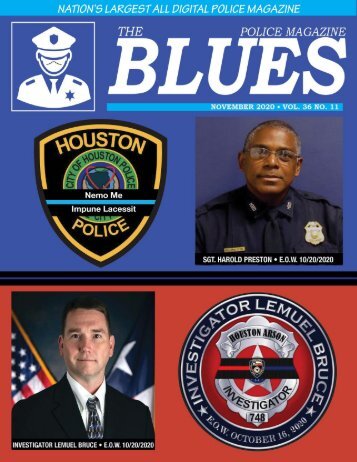
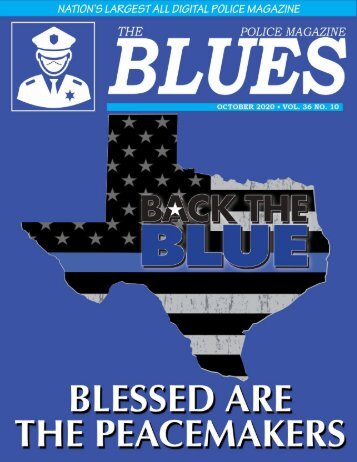

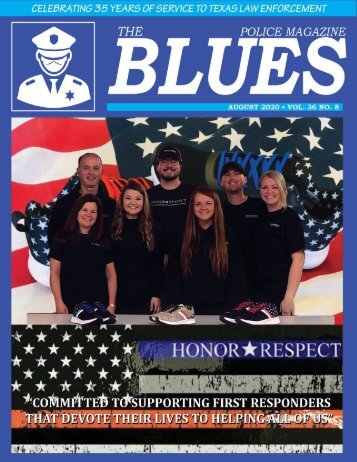

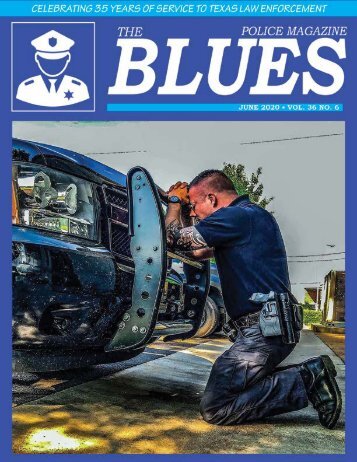

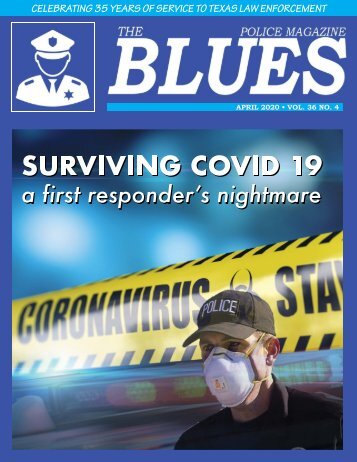

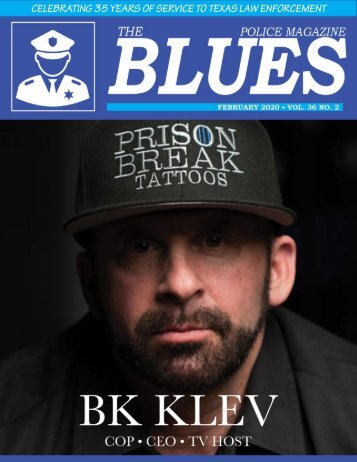
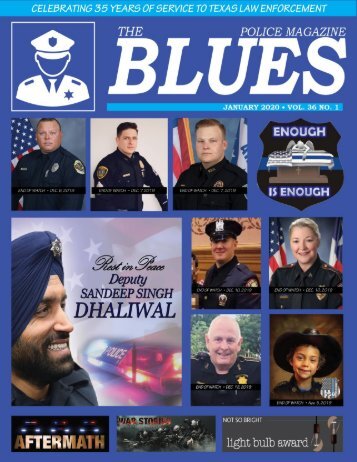
Follow Us
Facebook